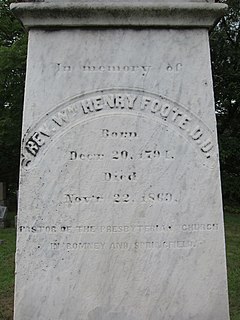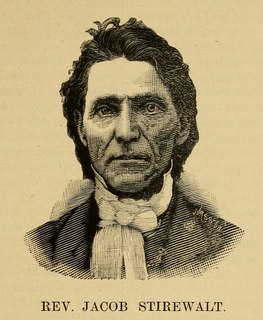Related Research Articles

The Lutheran Church—Missouri Synod (LCMS), also known as the Missouri Synod, is a traditional, confessional Lutheran denomination in the United States. With over 1.8 million members, it is the second-largest Lutheran body in the United States. The LCMS was organized in 1847 at a meeting in Chicago, Illinois, as the German Evangelical Lutheran Synod of Missouri, Ohio, and Other States, a name which partially reflected the geographic locations of the founding congregations.
1517 Media, formerly Augsburg Fortress Press, is the official publishing house of the Evangelical Lutheran Church in America (ELCA), also publishing for the Evangelical Lutheran Church in Canada (ELCIC) as Augsburg Fortress Canada. Headquartered on South Fifth Street in Minneapolis, Minnesota, in the former headquarters of the American Lutheran Church, Augsburg Fortress publishes Living Lutheran, the Lutheran Book of Worship (1978), the Lutheran Study Bible, and Evangelical Lutheran Worship (2006), as well as a range of academic, reference and educational books. Tim Blevins has served as the CEO of 1517 Media since August, 2018. Beth Lewis served as the CEO of Augsburg Fortress since September 3, 2002.

The Evangelical Lutheran Synodical Conference of North America, often known simply as the Synodical Conference, was an association of Lutheran synods that professed a complete adherence to the Lutheran Confessions and doctrinal unity with each other. Founded in 1872, its membership fluctuated as various synods joined and left it. Due to doctrinal disagreements with the Lutheran Church–Missouri Synod (LCMS), the Evangelical Lutheran Synod (ELS) and the Wisconsin Evangelical Lutheran Synod (WELS) left the conference in 1963. It was dissolved in 1967 and the other remaining member, the Synod of Evangelical Lutheran Churches, merged into the LCMS in 1971.

The Independent Evangelical-Lutheran Church is a confessional Lutheran church body of Germany. It is a member of the European Lutheran Conference and of the International Lutheran Council (ILC). The SELK has about 33,000 members in 174 congregations. The seat of SELK is in Hanover.

The Virginia Synod is one of the 65 synods of the Evangelical Lutheran Church in America, consisting of the entire state of Virginia except for several counties and cities in the Metropolitan Washington, D.C. Synod. The Evangelical Lutheran Church in America (ELCA) was formed in 1988 and currently has over 9300 congregations and 3.6 million members in all 50 states. Known as the church of "God's work. Our hands," the ELCA emphasizes the saving grace of God through faith in Jesus Christ, unity among Christians and service in the world. The ELCA's roots are in the writings of the German church reformer, Martin Luther.

Paul Henkel was a native of North Carolina who became an itinerant evangelist for the Lutheran Church in the eastern United States.
The Evangelical Lutheran Tennessee Synod (1820–1920), commonly known as just the Tennessee Synod, was a Lutheran church body known for its staunch adherence to the Augsburg Confession and commitment to confessional Lutheranism. The synod began with six ministers in 1820 and had forty by 1919, plus ten students and candidates for ministry. It merged into the United Synod of North Carolina in 1920.

Abel J. Brown (1817–1894), was a Lutheran pastor of Immanuel's and Buehler's congregations in Sullivan County, Tennessee. He was a leader in the Evangelical Lutheran Tennessee Synod from 1836 to 1861. He was instrumental in the leading the East Tennessee congregations to form the Evangelical Lutheran Holston Synod, and was a leading member of that synod from 1861 until his death. He published several of his sermons and essays, and was the president of the Diet of Salisbury in 1884, which oversaw the creation of the United Synod of the Evangelical Lutheran Church in the South.
The Evangelical Lutheran Joint Synod of Ohio and Other States, commonly known as the Joint Synod of Ohio or the Ohio Synod, was a German-language Lutheran denomination whose congregations were originally located primarily in the U.S. state of Ohio, later expanding to most parts of the United States. The synod was formed on September 14, 1818, and adopted the name Evangelical Lutheran Joint Synod of Ohio and Other States by about 1850. It used that name or slight variants until it merged with the Iowa Synod and the Buffalo Synod in 1930 to form the first American Lutheran Church (ALC), 1930–1960.

First Lutheran Church is a Lutheran church in Springfield, Ohio, and is in the Southern Ohio Synod of the Evangelical Lutheran Church in America (ELCA).
The Reverend Doctor Virgil A. (Buck) Moyer, Jr. was a Lutheran pastor who served as President and Bishop of the Virginia Synod from 1976–1987.

Mount Calvary Lutheran Church, also known as Hawksbill Church, Hacksbill Church, Hoxbiehl Church, and Gomer's Church, is an historic Lutheran church with adjacent cemetery located near the town of Luray in Page County, Virginia, United States.

Immanuel Lutheran Church is an LCMS church in Perryville, Missouri.

William Henry Foote was an American Presbyterian minister in Virginia and North Carolina. He served as a Confederate chaplain during the American Civil War of 1861-1865. He wrote several books about the history of Presbyterians in the American South.

Hebron Church is a mid-19th-century Lutheran church in Intermont, Hampshire County, in the U.S. state of West Virginia. Hebron Church was founded in 1786 by German settlers in the Cacapon River Valley, making it the first Lutheran church west of the Shenandoah Valley. The congregation worshiped in a log church, which initially served both Lutheran and Reformed denominations. Its congregation was originally German-speaking; the church's documents and religious services were in German until 1821, when records and sermons transitioned to English.
The Reverend James F. Mauney is a Lutheran pastor who served as Bishop of the Virginia Synod from 1999-2017. James Foltz Mauney was born to The Rev. Marshall F. Mauney and Laura Virginia Foltz Mauney of Norfolk, VA. His father served as pastor at First Lutheran, Norfolk, for 20 years.
Concordia College was a Lutheran college and high school in Conover, North Carolina. Founded as a high school by members of the Evangelical Lutheran Tennessee Synod in 1878, it added college courses in 1881. The English Evangelical Lutheran Synod of Missouri and Other States took over control of the school in 1893. Control passed to the Lutheran Church–Missouri Synod when the English Synod merged with it in 1911. In April 1935, a fire destroyed the main building, and the school closed permanently at the end of the spring semester.

The Reverend Jacob Stirewalt was a Lutheran minister serving in Virginia during the mid-19th century. He was born near Salisbury, Rowan County, North Carolina, on Saturday, August 17, 1805, and died at his residence, in New Market, Shenandoah County, Virginia, on Saturday the 21st of August, 1869, at the age of 64 years and 4 days.
Peter Schmucker (1784–1860) was a Lutheran and later Methodist minister, who served congregations first in Virginia, then in Pennsylvania, Ohio, and other western states.
Spruce Run Evangelical Lutheran Zion Church, better known as Spruce Run Lutheran Church, is located in Lebanon Township, New Jersey. The congregation is a member of the New Jersey Synod and the Evangelical Lutheran Church in America (ELCA).
References
- *Cassell, C. W.; W. J. Finck; and Elon O. Henkel, editors, History of the Lutheran Church in Virginia and East Tennessee. Strasburg, Virginia: Shenandoah Publishing House, Inc., 1930. Digital images. Ancestry.com. https://www.ancestry.com : 2008.
- Miller, Howard G. "Genealogy Abstract of Rev. John N. Stirewalt Pastoral Record 1869-1906 Page County, Virginia." 1989.